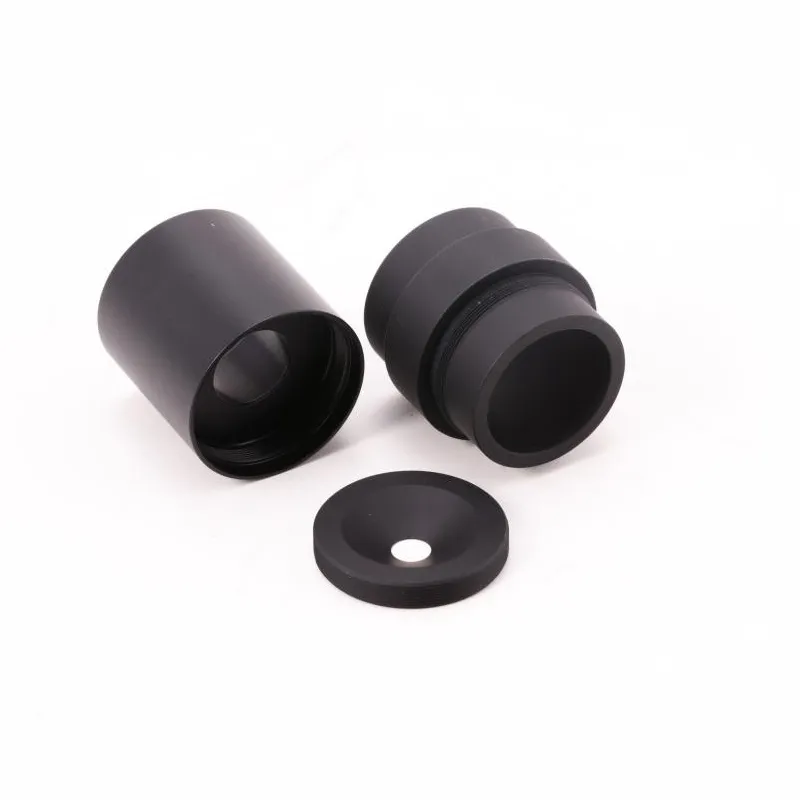Telecentric Lens Housing: The Backbone of Precision Imaging Systems
2024-11-29
In the realm of optical systems, telecentric lenses are celebrated for their ability to produce distortion-free images with uniform magnification. While much attention is given to the lenses themselves, the telecentric lens housing deserves equal recognition. It provides the structural integrity and alignment necessary for the lens to perform at its best, particularly in demanding applications such as industrial inspection, robotics, and scientific research.
Why is Telecentric Lens Housing Important?
The primary purpose of telecentric lens housing is to maintain the alignment of the optical components while protecting them from environmental and mechanical stresses. A well-designed housing ensures that the unique optical properties of telecentric lenses—parallel ray paths and consistent magnification—are preserved under all operating conditions.
Design Considerations for Telecentric Lens Housing
1. Material Selection
Materials like anodized aluminum and stainless steel are commonly used in telecentric lens housings due to their strength, thermal stability, and resistance to corrosion. These materials ensure durability and reliable performance over extended periods.
2. Compact and Lightweight Construction
Many applications require compact lens housings to save space without compromising functionality. Lightweight materials, combined with ergonomic designs, ensure easy integration into various optical setups.
3. Precision Mounting Options
Telecentric lens housings are often equipped with standardized mounting threads, clamps, or dovetail grooves. These features facilitate secure attachment to cameras, stages, or other optical components, ensuring seamless integration into broader systems.
4. Environmental Sealing
For applications in harsh environments, lens housings may include seals or protective glass elements to shield the lens from dust, moisture, and other contaminants.
5. Thermal Management
Thermal stability is crucial for optical systems used in temperature-sensitive applications. High-quality housings are designed to minimize thermal expansion and maintain the alignment of optical components under varying temperatures.
Advantages of Telecentric Lens Housing
1. Enhanced System Stability
The housing acts as a rigid framework that resists vibrations and mechanical disturbances, maintaining the alignment of the lens elements.
2. Improved Optical Performance
By preserving the telecentricity of the lens, the housing ensures consistent image quality and measurement accuracy across a wide field of view.
3. Extended Lifespan
Robust housing materials and protective features increase the durability of the lens, reducing the need for frequent replacements or repairs.
4. Simplified Integration
Standardized dimensions and mounting options make it easier to incorporate the lens into existing optical systems or industrial setups.
Applications of Telecentric Lens Housing
1. Machine Vision
Telecentric lenses are integral to automated inspection systems, and their housing ensures consistent performance in high-speed manufacturing environments.
2. Microscopy
Telecentric lens housings provide the stability needed for precision imaging in scientific research and medical diagnostics.
3. 3D Measurement Systems
Accurate dimensional analysis in industries like aerospace and automotive relies on telecentric lenses housed in stable, precision-engineered casings.
4. Robotics
In robotic vision systems, telecentric lens housings ensure that lenses remain aligned even during rapid movements or in challenging conditions.
Future Trends in Telecentric Lens Housing
As technology advances, telecentric lens housings are likely to become more compact, lightweight, and adaptable. Innovations in materials, such as composites or advanced alloys, will enhance durability while reducing weight. Additionally, integration with smart technologies, such as sensors for real-time monitoring of alignment and environmental conditions, could further improve the performance of these optical systems.
The telecentric lens housing is an unsung hero in precision imaging systems, providing the structural integrity and alignment necessary for telecentric lenses to function optimally. By choosing the right housing, manufacturers and researchers can unlock the full potential of telecentric lenses, achieving unparalleled accuracy and reliability in their applications. Whether you’re designing an industrial inspection system or a high-precision metrology setup, investing in quality telecentric lens housing is a step toward excellence.



